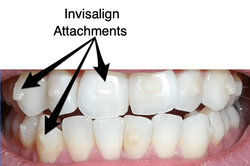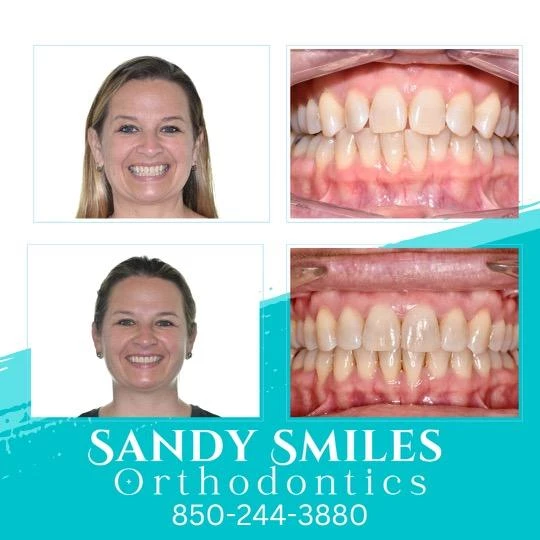Invisalign vs. Typical Braces: Which Choice Is Right for You?
When thinking about orthodontic treatment, the choice in between Invisalign and typical dental braces provides a number of vital elements that warrant mindful analysis. Invisalign uses a discreet choice with removable aligners, while typical dental braces give an extra visible yet reliable option for serious misalignment. Each option includes distinct benefits and downsides associated to looks, convenience, therapy period, and expense. Understanding these subtleties is crucial for making an educated choice that straightens with your individual choices and way of living. The concern stays: which option will best satisfy your orthodontic demands and assumptions?
Introduction of Treatment Alternatives

In comparison, typical dental braces contain metal braces and cords that are bound to the teeth. This technique applies continual pressure in time to attain alignment. While efficient for complex orthodontic problems, typical dental braces require normal check outs for adjustments and can posture difficulties in preserving dental health as a result of the trouble of cleaning around brackets and cables.
Both options have their advantages, and the selection usually hinges on particular oral problems, way of life choices, and individual conformity. Ultimately, seeking advice from an orthodontic expert is crucial for determining the most suitable therapy plan tailored to individual demands. Understanding the nuances of each choice can considerably influence the overall success of orthodontic therapy.
Visual Factors To Consider
A substantial variable influencing the choice in between Invisalign and typical dental braces is the aesthetic allure each therapy uses. Invisalign aligners are crafted from clear plastic, making them basically unnoticeable when put on. This very discreet appearance is especially attracting teens and grownups that may really feel uncomfortable concerning their orthodontic therapy. The capacity to maintain an all-natural smile throughout the alignment procedure can considerably enhance the person's self-confidence in specialist and social settings.
On the other hand, typical braces include metal brackets and wires, which can be a lot more visible. While developments in orthodontic innovation have actually brought about the advancement of smaller braces and colored elastics, conventional braces still maintain a more obvious profile. For some people, the presence of dental braces may deter them from seeking needed treatment.
Eventually, the selection between Invisalign and traditional dental braces may depend upon personal choices regarding aesthetic appeals. Individuals that focus on discretion usually lean toward Invisalign, while those that are much less worried concerning exposure may choose for standard dental braces. Recognizing the aesthetic ramifications of each choice is vital for making an informed choice that lines up with one's way of life and preferences.
Comfort and Convenience

In regards to comfort, Invisalign aligners are detachable, allowing patients to appreciate their favorite foods without limitation and maintain ideal oral health. Cleaning and flossing are streamlined, as the aligners can be taken out throughout these regimens, whereas conventional dental braces need mindful steering around wires and braces.
Additionally, Invisalign's modern system permits less orthodontic sees. Individuals usually get several sets of aligners at the same time, which can improve the therapy process and lower time spent in the orthodontist's chair. In contrast, read this standard braces require normal adjustments, making them less practical for those with active routines. Invisalign. In general, the comfort and convenience of Invisalign make it an appealing choice for several individuals looking for orthodontic therapy.
Therapy Period and Efficiency
While both Invisalign and traditional braces work in dealing with oral misalignments, the duration of therapy can differ dramatically in between the 2 alternatives. Commonly, Invisalign treatment can take anywhere from 12 to 18 months, depending on the complexity of the situation. The clear aligners work by slowly shifting teeth into their preferred placements, and regular follow-ups with an orthodontist help guarantee progression continues to be on course.
In comparison, traditional braces commonly call for a longer dedication, usually varying from 18 months to three years. This is because of their set nature and making use of braces and cords, which can be a lot more effective for intricate cases and serious imbalances (Invisalign). The therapy effectiveness of typical braces is well-documented, as they permit exact modifications and higher control over tooth activity
Ultimately, the choice between Invisalign and standard dental braces might hinge on both the awaited treatment duration and the particular oral concerns handy. Consulting with an orthodontist is critical, as they can supply tailored referrals based upon private demands, making certain the selected approach aligns with desired timeframes and outcomes.
Expense Contrast and Insurance Policy Options
Price plays a significant function in the decision-making procedure for people taking into consideration orthodontic treatment, whether selecting Invisalign or typical dental braces. Generally, the expense of Invisalign ranges from $3,000 to $8,000, while typical braces usually set you back in between $2,000 and $6,000. Elements influencing these expenses consist of the intricacy of the case, the period of treatment, and geographical place.
Many this contact form dental insurance coverage strategies supply partial protection for orthodontic treatments, however the specifics can differ widely. Usually, typical dental braces may be much more frequently covered by insurance plans compared to Invisalign, which some insurers categorize as an aesthetic procedure.
Additionally, several orthodontic techniques supply adaptable settlement plans, making both treatment alternatives more accessible. Individuals must ask about prospective funding choices and discounts for upfront repayments. Evaluating the complete price, consisting of insurance benefits and payment plans, is important for making a notified choice that straightens with both aesthetic choices and budget factors to consider.

Verdict
In summary, the choice in between Invisalign and conventional dental braces rests on multiple elements, including visual choices, convenience, treatment duration, and expense. Invisalign provides a discreet, removable option that assists in oral hygiene and dietary adaptability, while traditional dental braces might be a lot more suitable for intricate dental concerns and often come with a lower rate factor. Eventually, assessment with an orthodontist is important to evaluate specific conditions and identify one of the most appropriate therapy alternative for attaining ideal oral alignment.
When considering orthodontic therapy, the selection in between Invisalign and typical dental braces offers numerous crucial factors that merit cautious evaluation.Contrasting Invisalign and standard dental braces reveals distinctive therapy alternatives for orthodontic correction.While both Invisalign and conventional dental braces are effective in fixing dental imbalances, the duration of treatment can differ substantially between the 2 options.Price plays a substantial duty in the decision-making process for people considering orthodontic therapy, whether opting for Invisalign or conventional dental braces.In recap, the choice in between Invisalign and standard braces hinges on numerous factors, including visual preferences, comfort, treatment duration, and price.